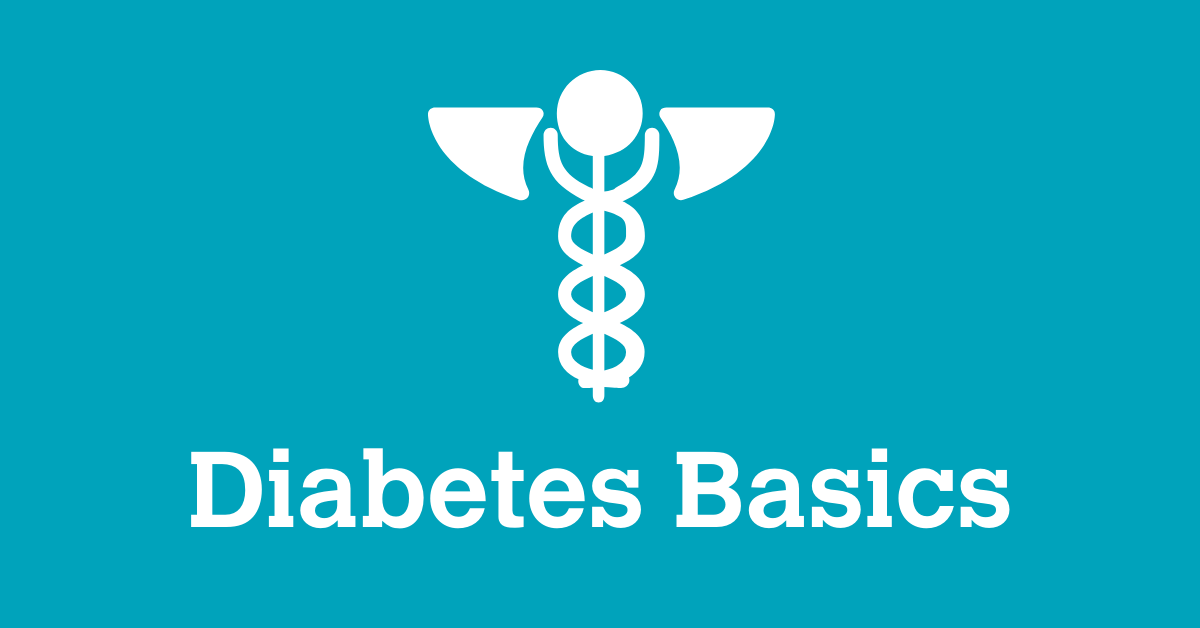
Diabetes 101: Risk factors, signs and symptoms, diagnosis and go-to treatments.
I walked into his assigned room with a glucose meter kit and selected informational sheets. Upon entering the room, I felt the somberness in the air. Soon after I introduced myself and confirmed his identity, he uttered the words I often hear: “How could I have diabetes? I am in shape. I work out.” Later I learned that he thought that because he did not know of any family history of diabetes, he did not have to worry about being diagnosed with the condition. He was familiar with diabetes and some of the possible diabetes complications. As I shared with him the other risk factors related to diabetes and how he does not have to be a victim of the condition, he slowly raised his head, and his eyes widened. I had his full attention.
Many people with or without the diagnosis of diabetes often associate family history as the primary and sometimes the main risk factor of diabetes. When people say that they do not have a family history of diabetes, I further clarify the statement by adding “not that you know of.” There is a possibility that family members could have had the diagnosis, and no have known they had it. Through medical advancements, we know that other risk factors related to diabetes exist, such as having high blood pressure & high cholesterol, being overweight (weighing over 20% of ideal weight), unmanaged & prolonged stress, viruses, higher than normal blood sugars, lack of physical activity, and unhealthy eating patterns. Certain ethnic groups have a higher risk of developing diabetes, and the incidence of diabetes increases with age. For women, other risk factors include polyovarian cystic syndrome, a diagnosis of gestational diabetes (GD), and delivering a baby weighing more than 9 pounds.
Diagnosis of Diabetes & Prediabetes
In the early 2000s, I remember reading that there were 17 million people with diabetes (PWD). According to 2015 statistics, 30.3 million people in the United States have diabetes, with over 7 million undiagnosed cases of diabetes. More than one million individuals have type 1 diabetes, and over 84.1 million have prediabetes. The number of PWD continues to rise yearly. Diabetes-related deaths continue to rise as well, and managing the condition has cost billions. According to the Centers for Disease Control 2010 Press Release, by 2050, there may be 1 in 3 adults with the diagnosis of diabetes.
Generally speaking, diabetes falls under three classifications: type 1, type 2, and GD.
Type 1 diabetes
Over 1.25 million people have type 1 diabetes (formerly known as juvenile, children with diabetes, or insulin-dependent diabetes). In type 1, the beta cells in the pancreas produce very little to no insulin, an essential hormone our cells need to use carbohydrates for fuel and regulate blood sugars. Without this hormone, blood sugars rise and can cause someone with type 1 diabetes to develop a potentially fatal condition known as Diabetic Ketoacidosis (DKA). For years, children were most commonly diagnosed with type 1 diabetes. These days, it is more widely understood that children and adults can both have or be diagnosed with type 1 diabetes. People with type 1 diabetes must take insulin in some form, whether through injections or via an insulin pump, to manage their blood sugars.
Another diabetes type, latent autoimmune diabetes in adults (LADA), is often categorized alongside type 1 diabetes because, in LADA, natural insulin production slows and eventually beta cells fail completely.
Type 2 diabetes
In type 2 Diabetes, health care providers prescribe medications based on three mechanisms that impact the body’s effectiveness in maintaining average blood glucose. There may be low Insulin production, the liver may be releasing too much glucose in the bloodstream, and the body’s cells may be resistant to insulin. Insulin is the key to cellular doors. Once glucose is in the cell, the cell uses glucose for energy.
Gestational diabetes
Gestational diabetes (GDM) develops during pregnancy, around 24 weeks. Approximately 50% of the women diagnosed with GDM develop type 2 diabetes. Also, there is a possibility of women diagnosed with GDM developing type 1 later in life.
There are four standard tests a healthcare provider can use to diagnose diabetes and prediabetes.
-
Fasting Plasma Glucose (FPG)- A diagnosis of a fasting blood sugar of 100-125 falls under the prediabetes diagnosis, while a fasting blood sugar of 126 or higher falls in the category of diabetes.
-
Random Plasma Glucose (RPG)- A reading of less than 200mg/dL falls under the prediabetes diagnosis, and an RPG of 200mg/dL or more significant falls under the diabetes diagnosis.
-
Oral Glucose Tolerance Test (OGTT) -A reading of 140 mg/dL -199 mg/dL falls under the diagnosis of prediabetes, and an OGTT of 200mg/dL or greater falls under the category of and diabetes.
-
Hemoglobin A1C, a non-fasting blood test, looks at the average 2-3 month blood sugar. A result of 5.7-6.4 is significant for prediabetes, while 6.5 or greater fall under the diagnosis of diabetes.
Signs and Symptoms
Some common signs and symptoms of diabetes include polyuria (increased thirst), polyphagia (increased hunger), and polydipsia (increased thirst). Other symptoms include unusual fatigue, headaches, palpitations, and some may lose consciousness during activities if their blood sugars drop too low. You can have all of the symptoms at once or one symptoms. People have told me that they were so thirsty that their mouth felt like a cotton ball and that they drank liters of liquid to quench their unquenchable thirst. After being diagnosed and learning of the symptoms, I have had many people recall having some of the symptoms before, and “the symptoms went away.” Communicate with your healthcare provider any abnormal, consistent, and inconsistent symptoms. It helps to keep a diary of your symptoms.
A type 1 diabetes diagnosis often comes after experiencing these and other symptoms. It is also misdiagnosed quite often.
Management of Diabetes & Prediabetes
Type 1 diabetes management requires insulin therapy by default since people with type 1 diabetes do not make any natural insulin, a naturally occurring hormone that is normally produced in the pancreas. Insulin is essential. Insulin will be prescribed based on an individual's needs to maintain a healthy blood sugar range.
Insulin will sometimes be prescribed for people with type 2 diabetes eventually but is not the first line of defense. Type 2 diabetes management will generally begin with lifestyle adjustments, such as nutrition and exercise, and depending on test results may also start with metformin.
Regardless of diabetes type, it is imperative to work with your diabetes educator, Registered Dietician (RD), primary care provider and specialists, including endocrinologists, to manage diabetes. Although there is no current cure for diabetes, PWD can manage the condition successfully with a team approach.
Keep your healthcare providers abreast of any lifestyle changes. Your medications may need adjustments from time to time.
Attend classes such as Diabetes Prevention classes, Diabetes Self Management courses, and keep your scheduled appointments. Less than 50% of PWD attend Diabetes Self Management classes; yet, diabetes remains the 7th leading cause of death, and we spend billions of dollars on managing diabetes.
With proper management of diabetes, many can avoid or delay diabetes complications. Much of the information we share with PWD, especially type 2 diabetes, is what everyone must practice so that the onset of type 2 diabetes & prediabetes and diabetes complications can be avoided or delayed. The best medicine for type 2 diabetes, lifestyle changes, continue to be part of the treatment plan of type 2 diabetes. Medications, including insulin, may be prescribed along with lifestyle changes.

